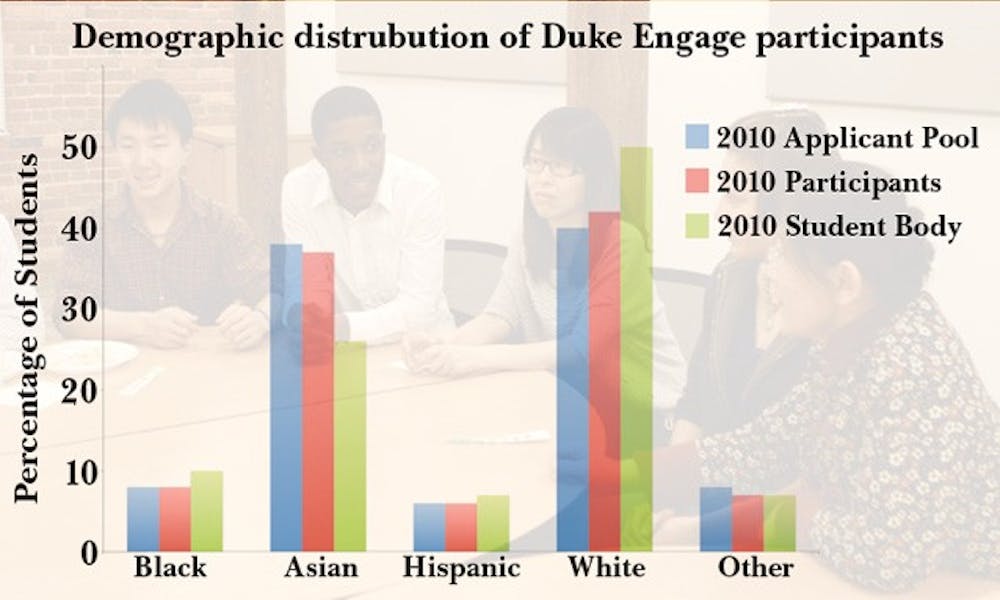Students from many segments of the Duke community now volunteer through DukeEngage.
Statistics provided by the service program show that the demographics of DukeEngage participants generally reflect the race and socioeconomic status of the undergraduate student body. The program consciously considers and values diversity, said Eric Mlyn, director of DukeEngage.
The participants who will volunteer in the United States and abroad this summer nearly identically mirror the program’s applicant pool. A total of 8 percent of the students are black, 37 percent Asian, 6 percent Hispanic, 42 percent white and 7 percent selected other or did not specify their race. These rates also reflect the student body at large, which in 2010 was 10 percent black, 26 percent Asian, 7 percent Hispanic, 50 percent white and 7 percent other or not specified.
Mlyn said socioeconomic diversity is also a priority for the program, adding that DukeEngage administrators do not want costs to discourage people from applying. Students on need-based financial aid make up 43 percent of all DukeEngage participants this year, which is equal to their representation in the total student body.
“I think we’re doing very well,” Mlyn said, noting that the numbers are in line with national trends.
Mlyn in part attributed the high representation of Asian students to the fact that there are “heritage students”—undergraduates who do DukeEngage in their countries of origin. For example, DukeEngage in China-Beijing often attracts many Chinese students, as the program requires participants to speak Mandarin Chinese.
One such student is freshman Sarah Wang, who moved to the United States from Beijing nine years ago and hopes to improve her language skills this summer. Wang said she is excited to work on the service project—which consists of teaching migrant children from rural areas—because of her family’s ties to the rural regions of China and her connection to the project.
Wang noted, however, that she believes this should not discourage non-Chinese students from applying.
“We reach the same benefits—there’s no advantage [to being Chinese].”
Some segments of the student body do remain underrepresented in the program, however.
Men made up half of the student body in 2010, but just 40 percent of students participating in DukeEngage this summer are male. Similarly, although student-athletes make up 12 percent of the student body, they will represent just 6 percent of DukeEngage participants.
The imbalance reflects national statistics about volunteering, Mlyn said. As of September 2010, 42.7 percent of civic engagement nationally was performed by men, according to the U.S. Bureau of Labor Statistics.
Mlyn said the program nonetheless tries to attract both sexes. Some programs attract higher male turnouts, including projects that focus on entrepreneurship, like the programs in Nicaragua and Guatemala.
Mlyn attributed the lack of varsity athletes to the fact that many of them are unable to participate because they are required to train over the summer.
Some students do put their training on hold to participate. Junior Chris Tweed-Kent, a member of the men’s varsity soccer team, said even though he could not practice for all of last summer he does not regret spending the summer in Santiago, Chile.
“Being an athlete has enhanced my overall experience at Duke, and sometimes two great things compete with each other for time,” Tweed-Kent wrote in an email Wednesday. “DukeEngage was an unbelievable experience that I wouldn’t have traded for anything.”
Get The Chronicle straight to your inbox
Signup for our weekly newsletter. Cancel at any time.

